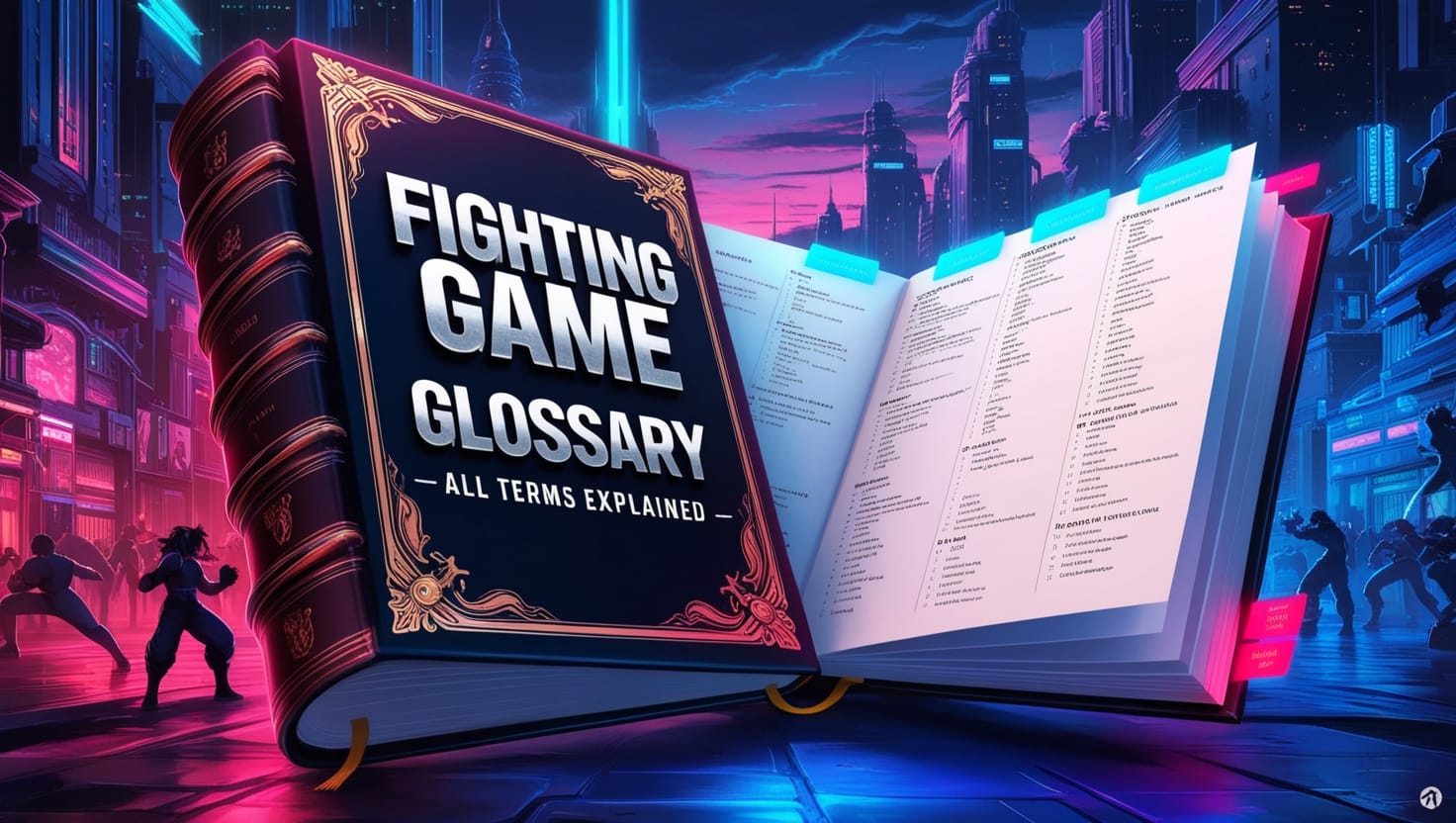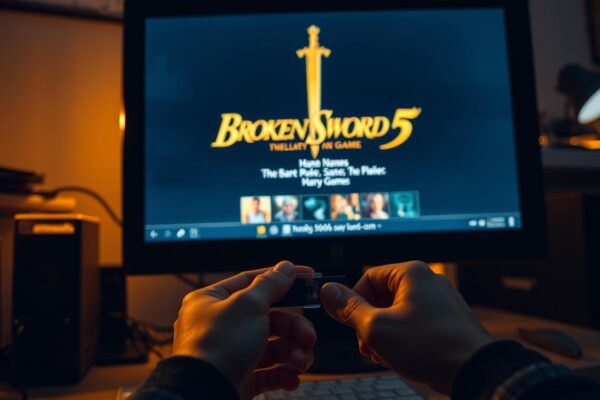
Fighting Game Glossary – All Terms Explained
Fighting Game Glossary – All Terms Explained

Introduction
The world of fighting games is big and complex, just like the moves you make during a match. Knowing the words can help you play better and have more fun if you are new or have been playing for a while. Here’s a simple glossary of fighting game terms to help you stay updated and ready for your next game.
Active Frames
Active Frames are the times when an attack can hit your opponent. Knowing about active frames helps you time your moves better.
Anti-air moves help stop attacks from the air. They can be special moves or common tactics to hit jumping opponents.
Backdash
A Backdash is a fast move that lets you move back to avoid attacks or make space. Good timing and distance are important for using a backdash well.
Block
Blocking is a way to protect yourself from getting hurt by attacks. You can block high or low based on where the attack is coming from.
C
Chain Combo
A Chain Combo is a set of attacks that work well together, usually starting with light hits and moving to harder ones. Learning to do chain combos is important for doing more damage.

Command Grab
A Command Grab is a special kind of grab that needs a certain button combination to work. Unlike regular grabs, they can’t be easily avoided or countered.
D
DP (Dragon Punch)
A DP stands for Dragon Punch, a move made famous by Ryu and Ken from Street Fighter. This move is known for being invincible at the start and is often used to hit opponents in the air.
Dot (Damage Over Time)
Damage Over Time (DoT) effects slowly take away an opponent’s health after they are hit by a specific move or attack.
E
EX Move
An EX Move is a stronger version of a special move. It usually costs some energy but gives more damage, protection, or other advantages.
Escape
Escape refers to techniques used to get out of unfavorable situations, such as throws or combos. Knowing escape options can save you from taking heavy damage.

F
Frame Trap
A Frame Trap is a technique that exploits small gaps in an opponent’s block to land a hit. It involves precise timing to catch the opponent pressing a button.
Footsies
Footsies are the skill of controlling space and using safe moves to trick your opponent into reacting. It is an important skill in advanced play.
G
Grappler
A Grappler character focuses on command grabs and fighting up close. They usually move slower but can deal a lot of damage when they get close.
Guard Break
A Guard Break move makes the opponent’s block fail, leaving them open for another attack. These moves are strong but can be risky.
H
Hit Confirm
Hit Confirming is the skill of seeing if an attack has hit and then following up with a combo. This helps you avoid wasting moves if the attack gets blocked.

Hurtbox
A Hurtbox is the space around your character that can be hit by an opponent’s attack. Knowing where your hitbox is helps you play better, both when attacking and defending.
I
Input
Input means the joystick directions and button presses needed to make moves. Clear inputs are important for performing moves correctly.
Invincibility Frames
Invincibility Frames are times when a character cannot be hit. These moves are often used to get away from attacks or to fight back.
J
Juggle
Juggling means hitting an opponent many times while they are in the air, so they can’t get back up. Good juggling can create powerful combos that deal a lot of damage.
Jump Cancel
A Jump Cancel lets you stop a move by jumping. It’s often used to make combos longer or to avoid attacks.
K
Kara Cancel
Kara Cancelling is when you cancel a normal move into a special move. This helps to make the special move reach farther or behave differently.
Knockdown
A Knockdown happens when you knock your opponent to the ground. This gives you a chance to put more pressure on them or try different moves.

L
Link
A Link is a combo that connects moves without chaining them together. It needs precise timing to pull off. Links are usually harder to do than chains.
Low Profile
A Low Profile move lets you dodge some attacks, helping you avoid hits that would usually land.
M
Mix-Up
A Mix-Up is a tactic where you change your attacks to confuse your opponent. Common types of mix-ups include high/low and left/right moves.
Meaty
A Meaty attack is timed to hit the opponent just as they become vulnerable after getting back up from being knocked down. This can catch them when they try to block or attack back.
Neutral
Neutral means the game is at a point where neither player has the upper hand. Winning neutral usually means being smarter and quicker than your opponent.
Negative Edge
Negative Edge lets you perform moves by letting go of a button instead of pressing it. This can make some combos and techniques easier to do.

Option Select
An Option Select is a move that covers different choices, allowing you to pick the best response based on what your opponent does.
OTG moves hit opponents who are on the ground. They are often used to continue combos or deal extra damage.
P
Parry
A Parry blocks an opponent’s attack and can leave them open for a counterattack. Parrying needs good timing and prediction.
Poke
A Poke is a fast and safe move used to control space and watch what the opponent does. Good poking is important for winning battles.
Q
Quick Rise
A Quick Rise is a quicker way to stand up after being knocked down, helping to limit the opponent’s chance to attack.
Quarter Circle
A Quarter Circle is a common way to move in games, usually for special moves. For example, a quarter circle forward (QCF) means moving down, then down-forward, and then forward.

R
Reset
A Reset stops a combo to put the opponent in a new spot, which can lead to more damage if they make a wrong guess.
Reversal
A Reversal is a move you do right after blocking or getting knocked down. It helps you fight back against your opponent’s attacks.
S
Safe Jump
A Safe Jump is a jump attack that is timed so it can either hit your opponent or let you block if they try to do a reversal. This move keeps you safe while still putting pressure on your opponent.
Special Move
Special Moves are unique attacks that need specific buttons to be pressed. They usually have special features like being invincible, doing more damage, or having unique effects.

T
Tech
Teaching means getting away from throws or getting up fast after being knocked down. Good teaching can really lower the damage the opponent can do to you.
Throw
Throws are special attacks that cannot be blocked and break through an opponent’s defense. They are important for getting past players who are playing defense.
U
Unblockable
An Unblockable move cannot be stopped by the opponent, making them dodge or counter it. These moves are uncommon and often need special setups.
Unsafe
Unsafe moves can be countered if blocked. Knowing which moves are unsafe is important for both attacking and defending.

V
Vortex
A Vortex is a tricky situation where moves keep repeating, making it hard for the opponent to get away without getting hurt.
Vulnerable Frames
Vulnerable Frames are times when a character can be hit. It’s important to manage your vulnerable frames to avoid getting hurt.
W
Wake-Up
Wake-up means the actions taken right after getting up from being knocked down. Wake-up actions can include blocking, attacking, or using moves that can’t be hit.
Whiff
A Whiff is when you miss hitting your opponent completely. Whiffing makes you open to attacks, so it’s important to try to avoid whiffs.

X
X-Factor
X-Factor is a feature in some fighting games that gives a short boost to a character’s skills. It is often used to help make a comeback in the game.
Y
Yomi
Yomi is a Japanese word that means “reading.” It is used to describe mind games and predictions in advanced gameplay. Good Yomi can give you a big advantage.
Z
Zoning
Zoning is a way to control space using projectiles and long-range attacks. This makes your opponent come to you on your terms.
Conclusion
Knowing these terms will help you become a better player and enjoy fighting games more. Keep practicing, stay curious, and remember that every match is a chance to learn and improve.
Want to step up your game? Join our group of fans and share your favorite tips and tricks. See you in the ring!
What is the best way to practice combos?
To practice combos well, focus on one combo at a time. Use training mode to work on your timing and skills without the stress of a match. When you feel ready, try adding different moves to use the combo in various situations.
How can I improve my defensive skills?
To get better at defense, learn your character’s strengths and weaknesses, and watch how your opponent plays. Practice blocking, parrying, and teaching, and play with a friend to improve your reactions in a safe setting.
What should I do if I’m facing an opponent who keeps zoning me?
If you’re up against a zoning opponent, try to move closer by using moves that can get past their projectiles, or use quick movements to dodge their attacks. Mixing up your strategy can help you find chances to attack while keeping them guessing.
How important is character matchup knowledge?
Knowing character matchups is very important in fighting games. Understanding how your character does against others and where they are weak helps you take advantage and plan strategies for each opponent you face.










